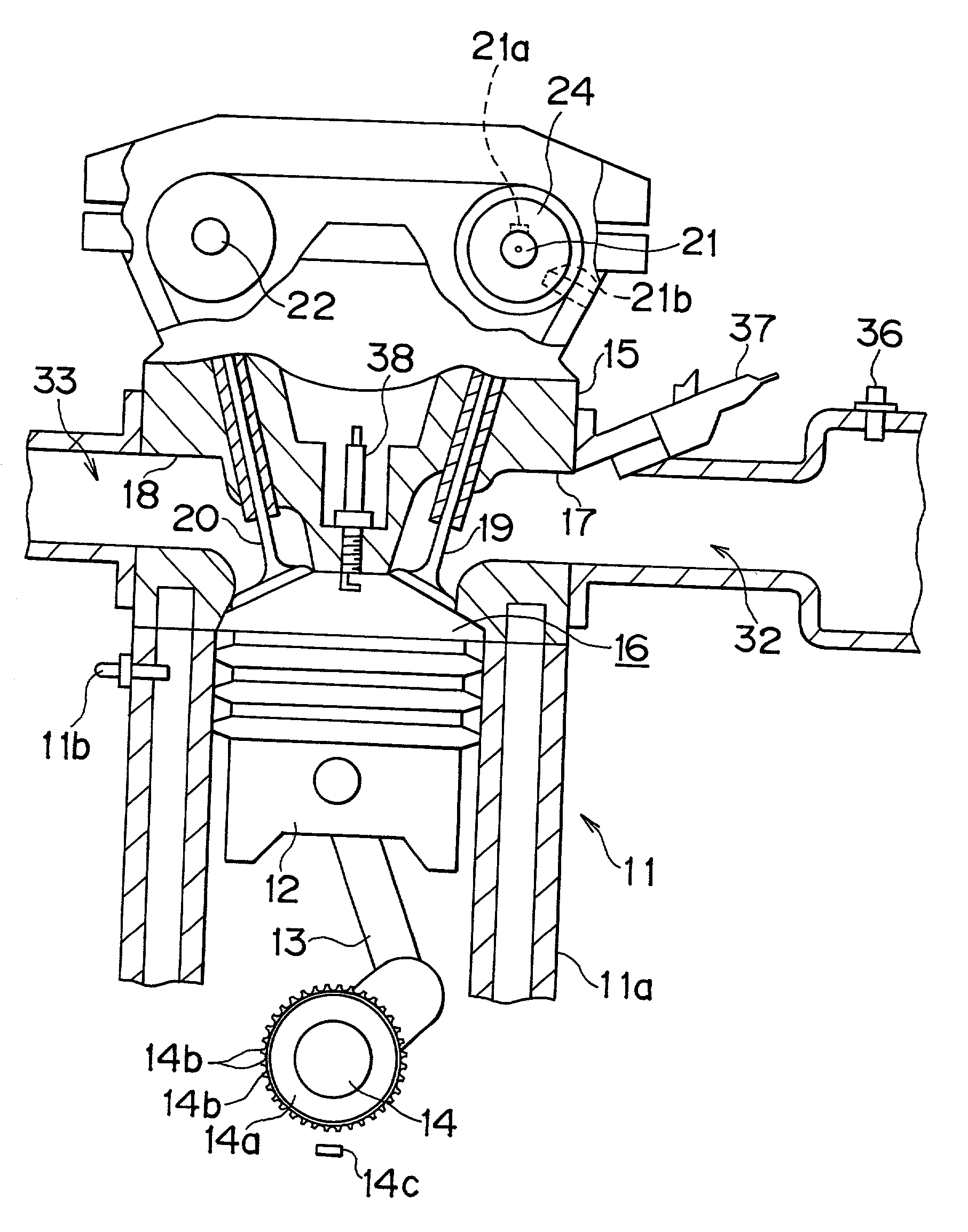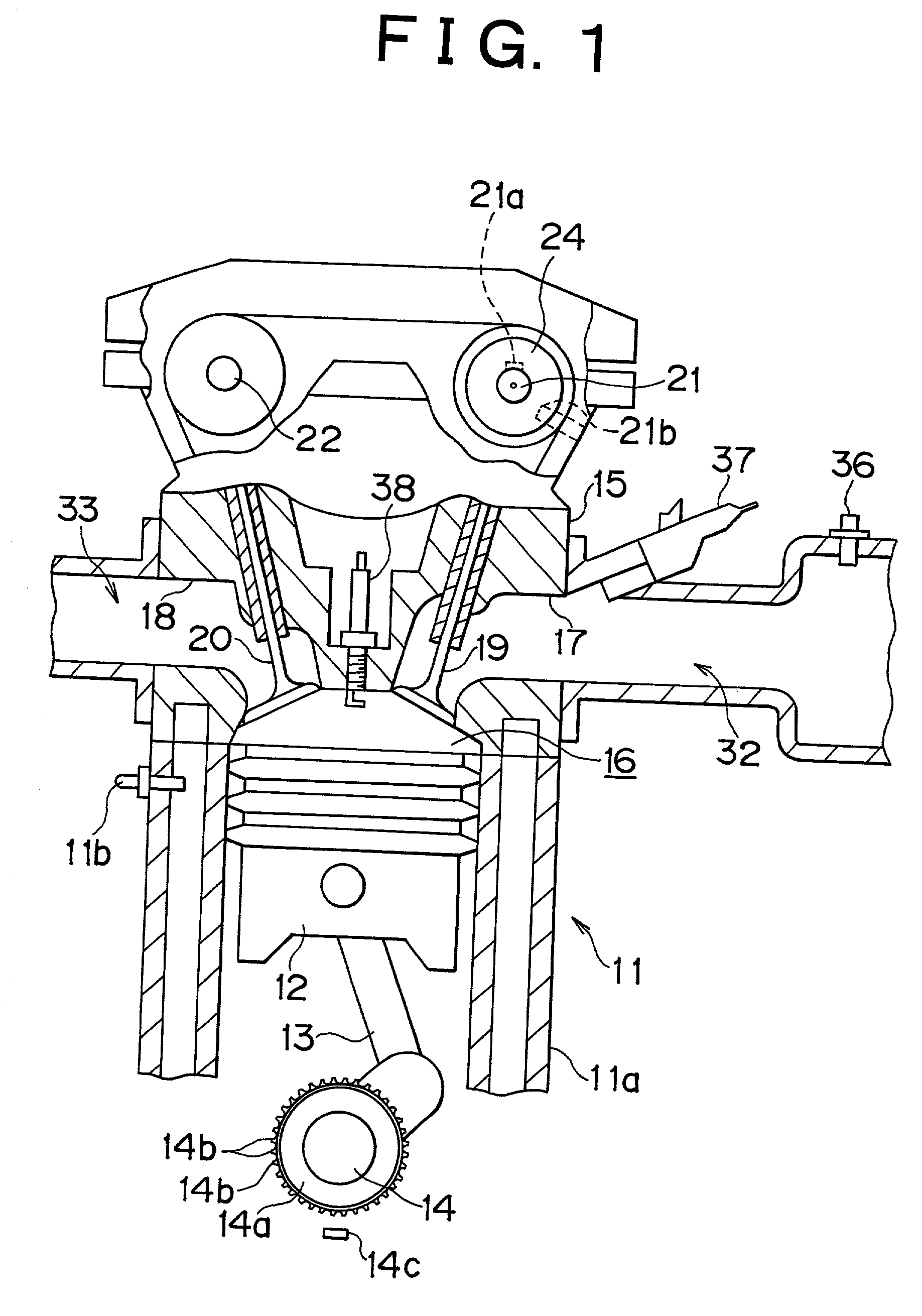Valve timing control apparatus and method of internal combustion engine
a technology of valve timing control and internal combustion engine, which is applied in the direction of electric control, machines/engines, instruments, etc., can solve the problems of inability to control the valve timing of the intake valve, inability to control the valve timing of the valve, and inability to achieve the control rang
- Summary
- Abstract
- Description
- Claims
- Application Information
AI Technical Summary
Benefits of technology
Problems solved by technology
Method used
Image
Examples
first embodiment
[0059] the invention when applied to an automobile engine will be described with reference to FIGS. 1 to 9.
[0060] As shown in FIG. 1, a cylinder block 11a of an engine 11 is provided with a total of four pistons 12 (only one of them is shown in FIG. 1) that are received in respective cylinders. The pistons 12 are connected to a crankshaft 14, that is, an output shaft of the engine 11, via corresponding connecting rods 13. Reciprocating movements of each piston 12 are converted into rotation of the crankshaft 14 by each connecting rod 13.
[0061] The crankshaft 14 is provided with a signal rotor 14a. An outer peripheral portion of the signal rotor 14a is provided with a plurality of protrusions 14b that are formed at each predetermined angle about an axis of the crankshaft 14. A crank position sensor 14c is provided at one side of the signal rotor 14a. As the protrusions 14b of the signal rotor 14a sequentially pass the crank position sensor 14c during rotation of the crankshaft 14, th...
second embodiment
[0167] Second Embodiment
[0168] A second embodiment of the invention will next be described with reference to FIGS. 10 and 11. In this embodiment, when the deviation of the actual advance amount .theta.rk from the target advance amount .theta.t continues to be less than the predetermined value a, the holding duty ratio H is stored as a holding duty ratio Hv1 or as a holding duty ratio Hv2 depending upon whether the bias force of the thrust mechanisms 53 acts on the intake camshaft 21, unlike the first embodiment in which a value obtained by removing the influence of the bias force from the holding duty ratio H is simply stored as a holding duty ratio Hv. Furthermore, in order to calculate a holding duty ratio H for calculation of a duty ratio D in the second embodiment, a selected one of the holding duty ratios Hv1 and Hv2 is used depending upon whether the bias force is currently acting on the intake camshaft, instead of correcting the holding duty ratio Hv in view of the bias force...
PUM
 Login to View More
Login to View More Abstract
Description
Claims
Application Information
 Login to View More
Login to View More - R&D
- Intellectual Property
- Life Sciences
- Materials
- Tech Scout
- Unparalleled Data Quality
- Higher Quality Content
- 60% Fewer Hallucinations
Browse by: Latest US Patents, China's latest patents, Technical Efficacy Thesaurus, Application Domain, Technology Topic, Popular Technical Reports.
© 2025 PatSnap. All rights reserved.Legal|Privacy policy|Modern Slavery Act Transparency Statement|Sitemap|About US| Contact US: help@patsnap.com



